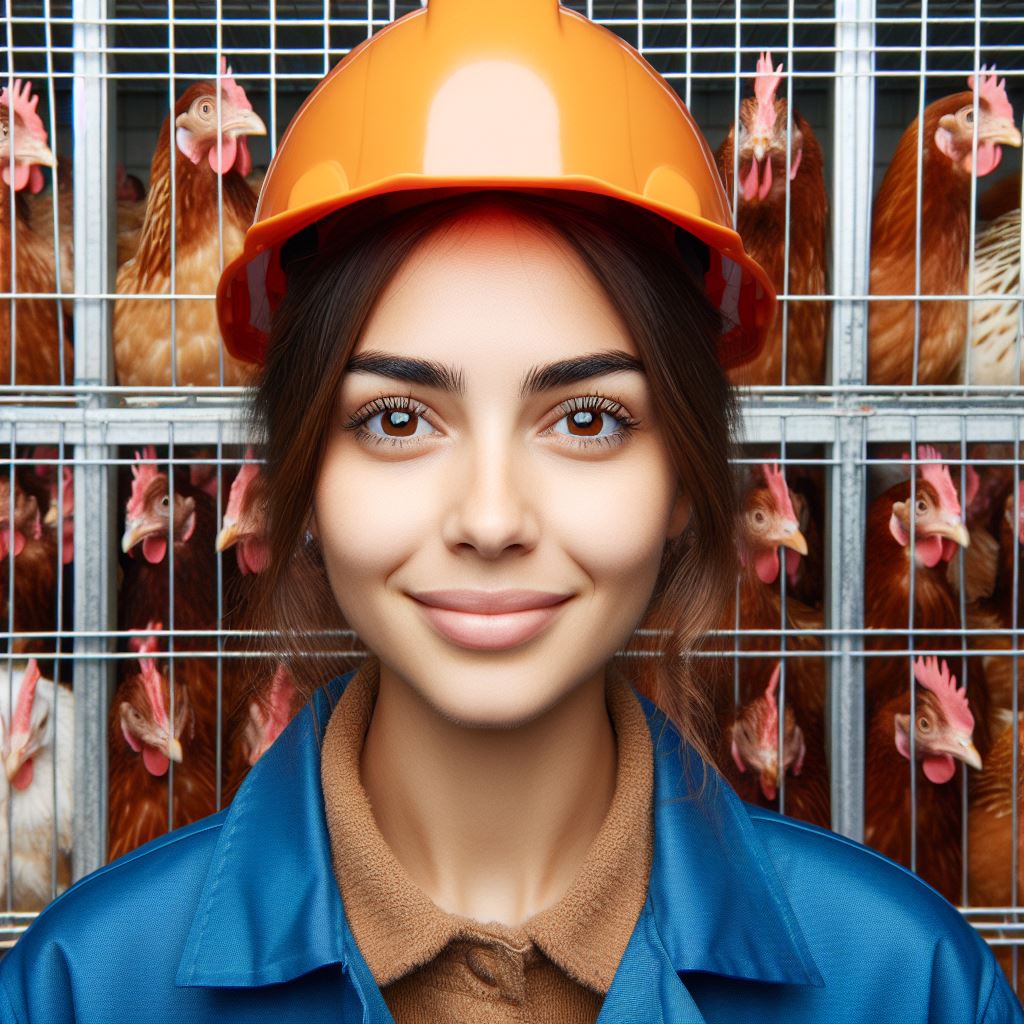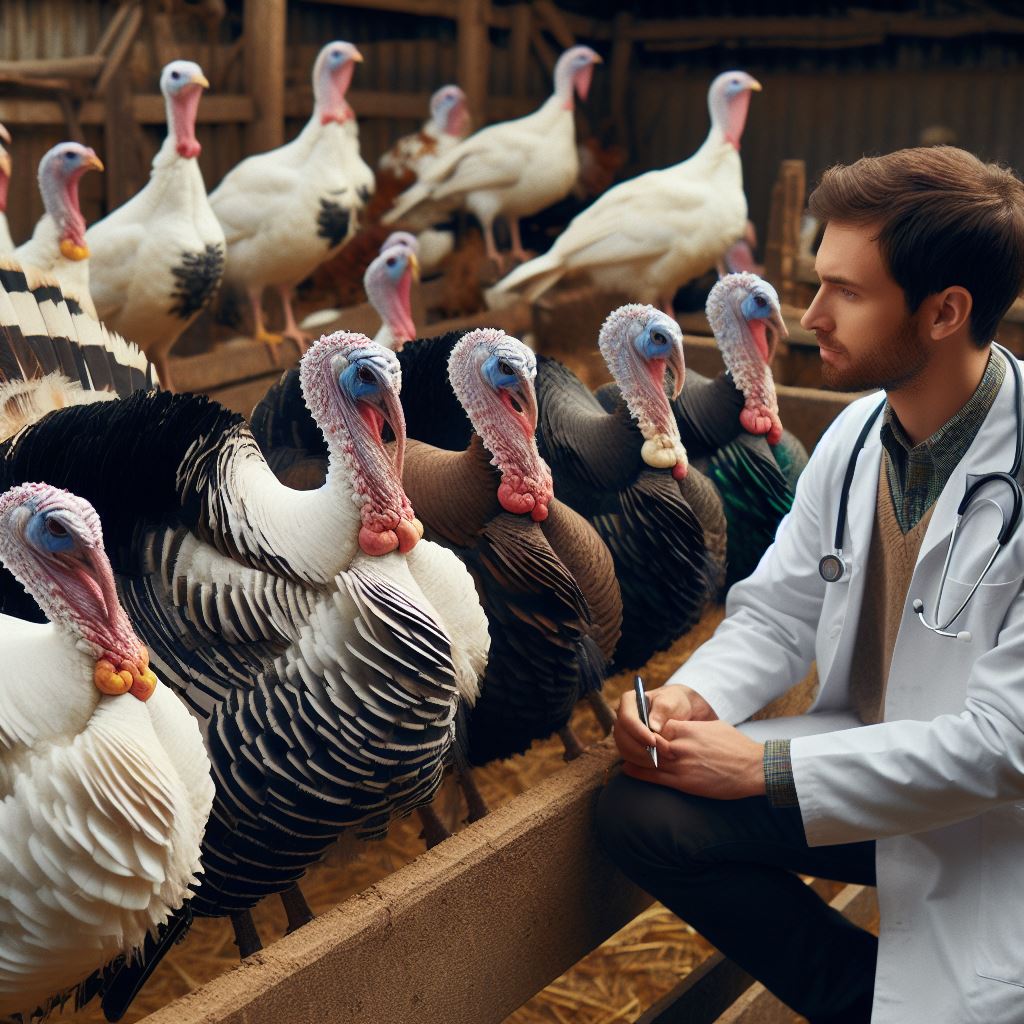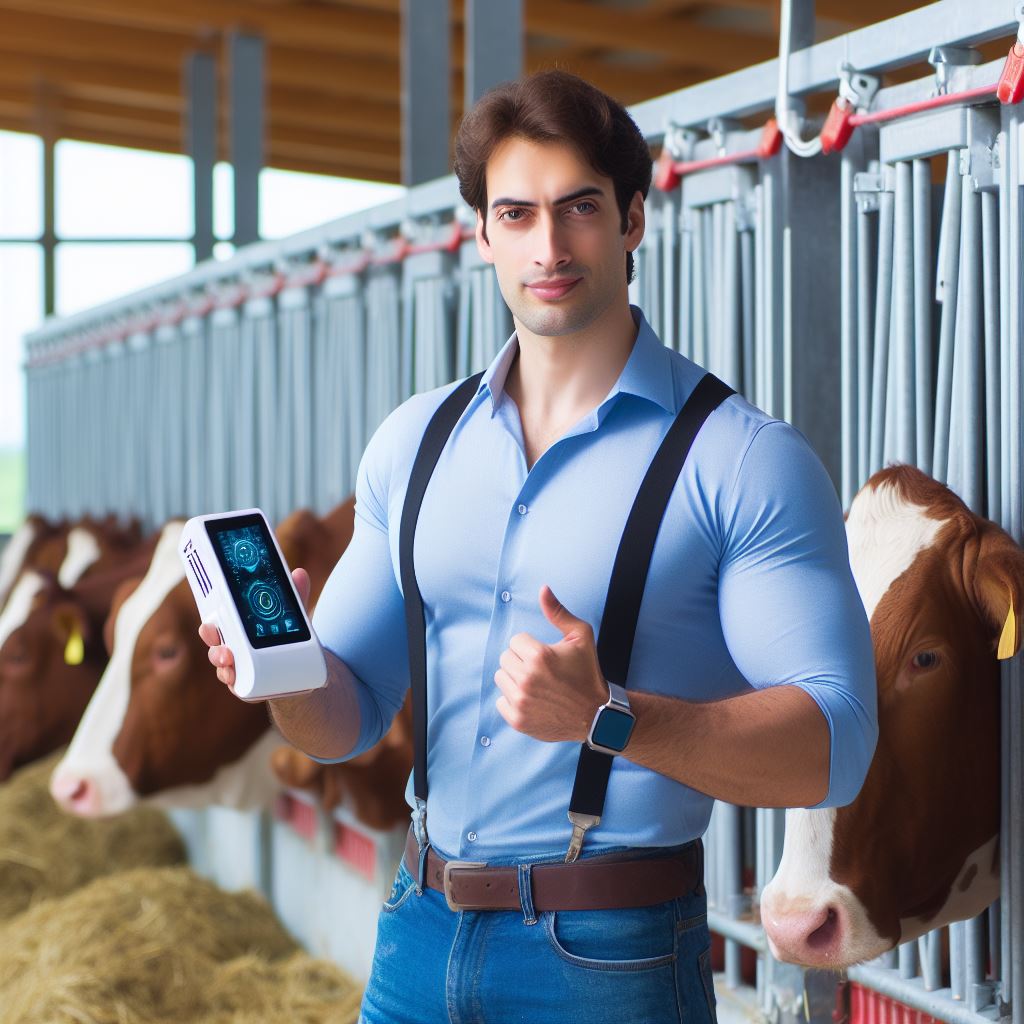Introduction
Poultry housing plays a crucial role in the farming industry, ensuring optimal growth and well-being of birds.
With the rapid advancement of technology in agriculture, innovative solutions are emerging to revolutionize poultry housing.
In this blog post, we will discuss some of these groundbreaking solutions that are set to shape the future of poultry farming.
Rapid advancement of technology in agriculture
Advancements in technology have transformed the way we approach poultry housing, aiming to create more comfortable and efficient environments for the birds.
These innovations not only enhance animal welfare but also improve productivity and overall farm sustainability.
One of the key developments is the integration of smart sensors and automation systems into poultry housing.
This allows farmers to monitor and control various parameters such as temperature, humidity, air quality, and lighting, optimizing the conditions for the birds.
Additionally, artificial intelligence and machine learning algorithms are being utilized to analyze data collected from these sensors, providing insights into bird behavior and health trends.
Innovative poultry housing solutions
There is a growing trend towards modular and flexible housing systems.
These structures can be easily adapted and reconfigured to accommodate different flock sizes and meet specific environmental requirements.
Such systems promote efficient space utilization, ventilation, and waste management, ultimately minimizing the environmental impact of poultry farming.
Another innovative solution involves the use of renewable energy sources to power poultry housing.
Solar panels and wind turbines can harness clean energy, reducing reliance on traditional power grids and lowering operational costs.
Such sustainable practices contribute to a greener and more socially responsible poultry industry.
In the upcoming sections of this blog post, we will delve deeper into each of these innovative poultry housing solutions, exploring their benefits, challenges, and real-world applications.
Transform Your Agribusiness
Unlock your farm's potential with expert advice tailored to your needs. Get actionable steps that drive real results.
Get StartedStay tuned to discover the exciting possibilities that lie ahead for poultry farmers in 2024 and beyond!
Vertical Farming Systems
Overview of vertical farming and its benefits
Vertical farming is a technique that involves growing plants or raising animals in vertically stacked layers.
It offers several advantages over traditional farming methods. Firstly, it maximizes land utilization by utilizing vertical space efficiently.
This is particularly important in urban areas with limited available land for agriculture.
Vertical poultry farming concept
In the context of poultry farming, vertical farming refers to the practice of raising chickens in multilevel structures.
These structures are designed to house multiple layers of poultry, taking advantage of vertical space.
Advantages of vertical poultry farming
Efficient land use
By utilizing vertical space, vertical poultry farming allows for higher livestock density, resulting in more productivity per unit of land.
Improved biosecurity
Vertical farming systems can be equipped with advanced biosecurity measures, such as controlled airflow and rigorous sanitation protocols.
This minimizes the risk of disease transmission and improves animal health.
Reduced environmental impact
Vertical poultry farming can have a lower environmental impact compared to traditional methods.
Efficient waste management systems and controlled nutrient cycles can minimize pollution and nutrient runoff.
Various types of vertical farming systems for poultry
There are several types of vertical farming systems that can be employed for poultry housing:
Vertical layer systems
These systems consist of multiple levels of cages or platforms, housing layers of poultry.
They are designed to provide optimal space utilization while prioritizing the well-being of the birds.
Vertical broiler systems
Specifically designed for raising broiler chickens, these systems maximize the use of vertical space while providing the necessary comfort and access to feed and water.
Vertical aviary systems
Aviary systems in vertical farming utilize multi-level structures to provide a more natural environment for poultry, allowing them to exhibit natural behaviors like perching and flying.
Vertical free-range systems
This system combines vertical farming with free-range access, allowing the birds to move between outdoor areas and indoor levels within the structure.
Ultimately, vertical farming systems offer innovative solutions for poultry housing in 2024.
They provide efficient land use, improved biosecurity, and reduced environmental impact.
With various types of vertical farming systems available, poultry farmers can choose the most suitable option for their specific needs and optimize productivity while ensuring animal welfare.
Read: Layer vs. Broiler: Choosing Your Poultry Path
Automated Climate Control Systems
Current challenges in maintaining optimal climate conditions in poultry houses
- Difficulty in regulating temperature and humidity levels consistently
- Inadequate ventilation leading to poor air quality and increased risk of diseases
- Manual monitoring and adjustment of climate control systems are time-consuming and labor-intensive
- Inefficient energy use resulting in high operational costs
Introduction of automated climate control systems
In recent years, the poultry industry has witnessed a significant shift towards automated climate control systems.
These innovative solutions utilize state-of-the-art technology to overcome the challenges faced by poultry farmers in maintaining optimal climate conditions for their flocks.
Features and components of automated climate control systems
Temperature regulation
Automated climate control systems incorporate advanced sensors and actuators to monitor and adjust temperature levels within poultry houses.
Showcase Your Farming Business
Publish your professional farming services profile on our blog for a one-time fee of $200 and reach a dedicated audience of farmers and agribusiness owners.
Publish Your ProfileThey ensure that the temperature remains within the ideal range for the well-being of the birds.
Humidity control
These systems also have humidity sensors and control mechanisms that help maintain the optimal humidity levels required for the poultry’s health.
They prevent excess moisture or dryness, which can lead to respiratory problems and decreased productivity.
Ventilation management
Automated climate control systems include intelligent ventilation systems that monitor the air quality inside poultry houses.
They automatically adjust airflow, ensuring a constant supply of fresh air and removing harmful gases, dust, and humidity.
Benefits of automated climate control systems
Reducing energy consumption
Automated climate control systems optimize energy usage by adjusting temperature, humidity, and ventilation based on real-time data.
They can save up to 30% of energy compared to traditional manual systems, resulting in significant cost savings for poultry farmers.
Enhancing bird health and productivity
Maintaining optimal climate conditions has a direct impact on the health and productivity of poultry.
Automated systems ensure a comfortable and stress-free environment, reducing the risk of diseases and improving overall bird welfare.
It results in higher growth rates, increased feed conversion efficiency, and better egg production.
In general, automated climate control systems offer a revolutionary approach to poultry housing by addressing the challenges associated with maintaining optimal climate conditions.
They provide precise temperature and humidity control, effective ventilation management, and significant energy savings.
These systems contribute to improved bird health, productivity, and overall profitability for poultry farmers.
Embracing such innovative solutions will undoubtedly shape the future of poultry housing in 2024 and beyond.
Read: Poultry Diseases: Prevention & Care Tips
Smart Sensors and Data-driven Management
In the year 2024, the importance of data-driven decision-making in poultry farming has become evident.
Poultry farmers have started embracing innovative solutions to enhance productivity and efficiency in their operations.
One significant development in poultry housing is the introduction of smart sensors.
Smart sensors play a crucial role in monitoring and managing various aspects of poultry houses.
These sensors are designed to collect real-time data and provide valuable insights for decision-making.
Several types of smart sensors are used in poultry houses to ensure optimal conditions for the birds.
Temperature and humidity sensors
One type of smart sensor commonly used in poultry houses is the temperature and humidity sensors.
These sensors continuously measure the ambient temperature and humidity levels.
The data collected from these sensors helps farmers to maintain ideal environmental conditions for the well-being of the birds.
Air quality sensors
Another essential smart sensor utilized in poultry housing is the air quality sensors.
These sensors monitor the air quality by measuring parameters such as ammonia levels, carbon dioxide levels, and dust particles.
By detecting any fluctuations in these parameters, farmers can take necessary actions to ensure a healthy and safe environment for the birds.
Feed and water sensors
Proper nutrition is vital for the growth and development of poultry.
Smart sensors are used to monitor feed and water consumption in poultry houses.
These sensors provide accurate data on the amount of feed consumed by the birds, allowing farmers to optimize the feeding process and prevent wastage.
Similarly, water sensors help in monitoring the water supply, ensuring the birds have access to clean and sufficient water at all times.
The data collected from smart sensors is not just limited to monitoring purposes. It can be utilized in various ways to improve poultry farming practices.
Real-time monitoring
Smart sensors enable real-time monitoring of poultry houses.
Farmers can access the data collected by the sensors through user-friendly interfaces, providing them with up-to-date information on the conditions inside the houses.
This real-time monitoring allows for immediate action in case of any deviations from the desired parameters.
Predictive analytics
By analyzing the data collected over time, predictive analytics can be applied to detect patterns and make accurate predictions.
These predictions help farmers anticipate potential issues or changes in the environment, enabling proactive measures to be taken.
For example, predictive analytics can help detect the onset of diseases and allow early intervention to prevent the spread among the birds.
Optimization of poultry production
Data-driven management through smart sensors enables farmers to optimize poultry production.
By analyzing the collected data, farmers can identify areas for improvement and implement necessary changes.
Showcase Your Farming Business
Publish your professional farming services profile on our blog for a one-time fee of $200 and reach a dedicated audience of farmers and agribusiness owners.
Publish Your ProfileThis optimization might include adjustments in temperature, ventilation systems, feed rationing, and overall operational efficiency.
In summary, smart sensors have revolutionized poultry housing by providing valuable data for decision-making.
These sensors have enhanced real-time monitoring, enabled predictive analytics, and optimized poultry production.
With the advancements in technology, it is expected that smart sensor systems will continue to evolve and play an even more significant role in poultry farming in the future.
Read: Starting a Poultry Farm: Essential Steps & Tips

Sustainable Housing Materials
Conventional poultry housing materials and their limitations
When it comes to poultry housing, conventional materials have their limitations.
These traditional options may include materials like wood, metal, or concrete.
While they have been used for many years, they can negatively impact sustainability.
Adoption of sustainable materials in 2024
In 2024, the adoption of sustainable materials in poultry housing is expected to increase.
This shift is driven by the need to reduce the industry’s environmental impact and embrace more eco-friendly practices.
Examples of sustainable housing materials
One example of sustainable housing material is recycled plastics.
These plastics can be transformed into durable and weather-resistant materials, perfect for constructing poultry houses.
By using recycled materials, the industry contributes to reducing plastic waste and greenhouse gas emissions.
Another innovative option is the use of bamboo-based composites.
Bamboo is a fast-growing and renewable resource that can be used to create composites that have excellent strength and durability.
These composites can withstand harsh environmental conditions, making them ideal for poultry housing.
Bio-based materials are also gaining popularity in poultry housing.
These materials are made from renewable sources such as agricultural by-products or plant fibers.
Not only are they sustainable, but they also offer good insulation properties and can help regulate temperature inside the poultry houses.
Advantages of sustainable housing materials
There are several advantages to using sustainable housing materials in the poultry industry:
Reduced carbon footprint
By using recycled materials or renewable resources, the industry can decrease its environmental impact and contribute to mitigating climate change.
Improved waste management
Sustainable materials often involve recycling or repurposing waste products, reducing the amount of waste sent to landfills.
This promotes a circular economy approach and minimizes pollution.
Enhanced durability and insulation
Sustainable materials can provide better insulation, thus reducing the energy required for heating or cooling poultry houses.
They are also designed to withstand various weather conditions, ensuring the longevity of the structures.
Overall, the future of poultry housing lies in sustainable materials.
Conventional options come with limitations that can harm the environment.
By adopting recycled plastics, bamboo-based composites, and bio-based materials, the industry can reduce its carbon footprint, improve waste management, and enjoy the benefits of enhanced durability and insulation.
Read: Robotics in Poultry Farming: The Future Is Here
Conclusion
The blog post has discussed various innovative poultry housing solutions.
The potential impact of these solutions on the poultry farming industry in 2024
These solutions have the potential to revolutionize the poultry farming industry in 2024.
In 2024, innovative solutions, such as advanced biosecurity measures, automated monitoring systems, and sustainable practices, are poised to revolutionize the poultry farming industry.
Expect heightened efficiency, improved disease control, and a more sustainable and resilient poultry sector.
Encouragement for farmers to consider and adopt innovative housing solutions for better productivity and sustainability in their operations
We encourage farmers to adopt these innovative housing solutions for improved productivity and sustainability in their operations.
Embrace innovation in farm housing for enhanced productivity and sustainability.
Modern housing solutions offer improved efficiency, climate control, and resource optimization.
Embrace change to secure a brighter and more resilient future for your farming operations.




